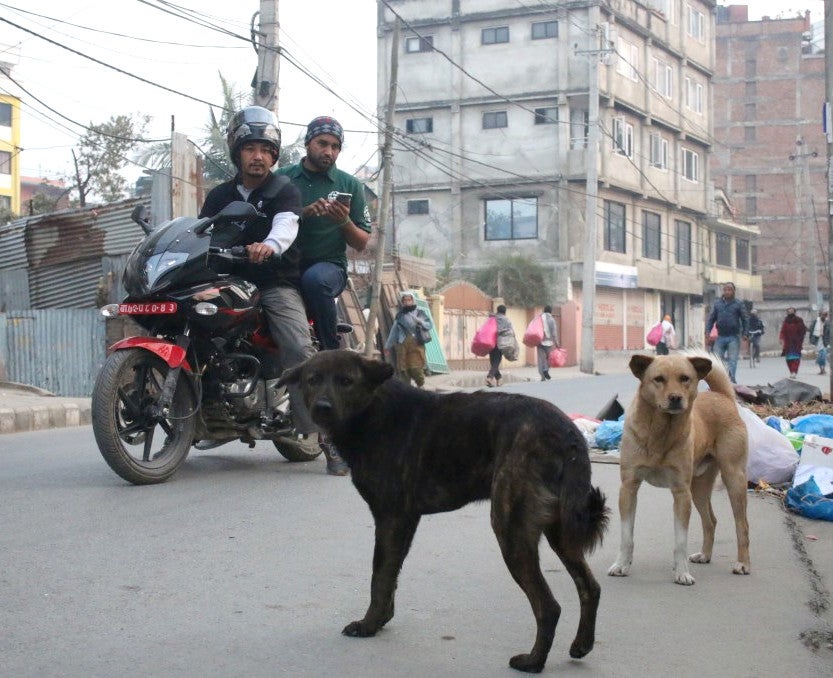
Humane Society International has operated successful dog and cat welfare and population management programs around the world for more than a decade. Our Monitoring, Evaluation and Impact Assessment (MEIA) work helps us design and customize humane, effective and sustainable solutions to address companion animal welfare issues at a local or national level. Humanely reducing free-roaming dog and cat populations and improving their health and welfare requires locally tailored interventions supported by data and ongoing analysis. Over the years, HSI’s MEIA team has provided support to local animal welfare organizations and governments to integrate effective monitoring and evaluation practices into their programs.
What is MEIA?
Monitoring, Evaluation and Impact Assessment (MEIA) is a process of data collection, data analysis and the subsequent explanation of program results and recommendations. MEIA is essential in any dog or cat population management program to:
- Design an evidence-based and effective program, ensuring sufficient budget planning and realistic goals, impacts and timelines.
- Gain insight and understanding into the community’s knowledge of animal welfare, their attitude towards animals and their practices.
- Monitor and evaluate the program with the latest scientific methods.
- Determine whether the program achieves set objectives.
- Enable program teams to adjust goals and focus based on data/evidence.
- Share measurable progress and success data with stakeholders, donors and media.
- Identify potential barriers and/or challenges ahead of program implementation.
Types of surveys
Prior to beginning any program to address dog and cat populations, two types of surveys are generally used.
A population survey helps us to understand the size and composition of the roaming dog and cat population and determine a baseline for several impact criteria used to measure progress, such as percentage of lactating female animals, percentage of puppies and health and population density. An accurate dog and cat population estimate helps to determine with more certainty what resources need to be allocated to a program. For example, in Quezon City (QC) in the Philippines, city officials believed there to be 10 dogs per 100 humans. Those figures guided the city’s rabies vaccination campaign, which was not being very effective. Following a collaboration, in which HSI led a dog population survey, HSI determined that there were 20.6 dogs per 100 humans. With the new accurate data, the rabies control program was revised, resulting in significant decline in dog-cat rabies cases and cases of canine mediated rabies in humans being brought down to zero in District 3, Quezon City.
A Knowledge, Attitude and Practice (KAP) survey facilitates a more accurate and unbiased understanding of what people in the targeted area know about animals and their welfare, and what they think and do in relation to their coexistence with owned and unowned dogs and cats in their community. It also helps us understand each community’s ability to properly care for their animals, given availability and access—including financial access—to services and information. For example, in La Paz, Bolivia, we recorded an important difference in the ability of households to keep their dogs confined based on the districts where they lived, with one district having most of the dogs, 91.9%, inside the house and another district with only 25.1% of dogs inside the house.
From outside sources, our MEIA team gathers information such as the veterinary capacity in a given area, number of dog bites and rabies cases in humans and number of street animal nuisance complaints to government authorities. In this way, we can determine what programmatic barriers or challenges may exist and what considerations need to be taken prior to and during program implementation.
Monitoring and impact assessment
Subsequent periodic surveys and information gathering provides accurate data to monitor progress, and adjust program needs and strategy, if necessary. In the long term, monitoring helps us to measure the impact of the program on animals and people.
Please visit here for HSI MEIA reports and published papers.
Mobile applications
Given our expertise in the implementation of field work and our need for tools that help us measure the impact and success of our interventions, HSI has developed mobile applications to gather and track data for spay/neuter, catch-neuter-vaccinate-return (CNVR) of dogs and mass vaccination programs.
Spay and neuter program mobile application
HSI currently uses this app to track the data and measure the progress of the catching and sterilizing of dogs (CNVR). It records each dog’s GPS location when caught and creates a map to assist with the release of street dogs to their original location. In addition, the app helps us track the steps between catching and release, such as pre- and post-op care, surgery data, as well as a photograph to identify each dog.
Mass vaccination mobile application
HSI currently uses this app in areas where mass vaccinations campaigns are implemented to monitor rabies vaccinations done in that area and calculate outputs. The app creates geo-fencing to guide vaccination teams, restricts vaccination effort to a desired area, records dog photos and welfare details, records GPS location and produces reports.
Humane Society International is the leading expert on data-driven dog and cat population management.
Please visit here for links to other useful mobile applications for monitoring, evaluation and impact assessment.
